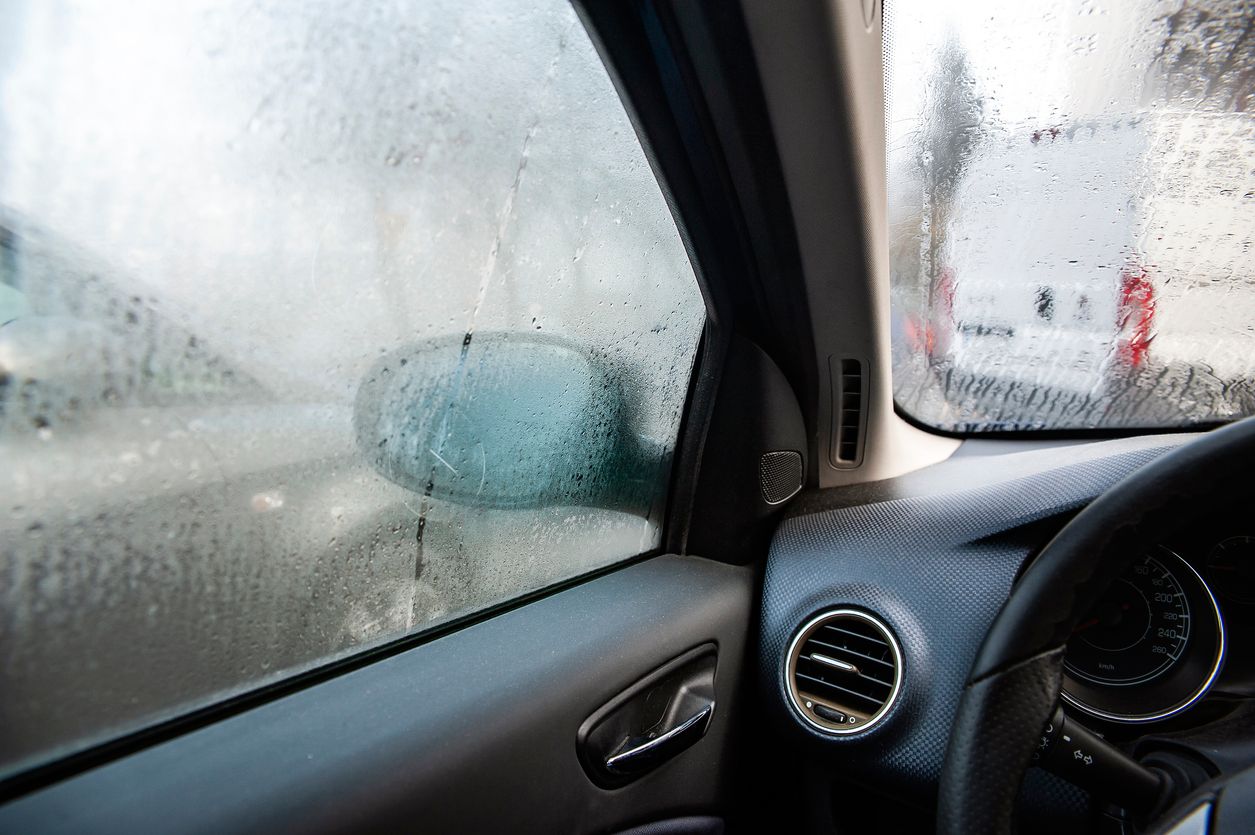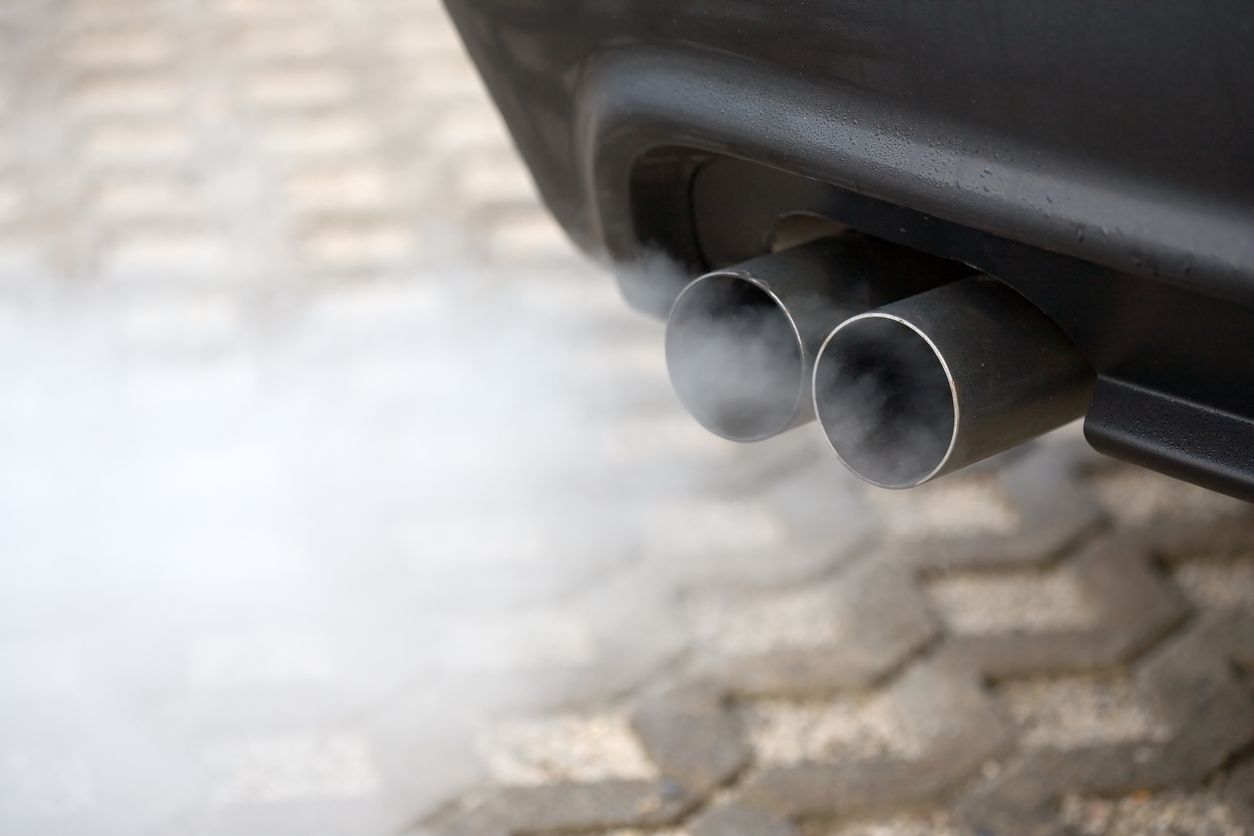Picture this: It’s a cold winter day, and you’re driving home from work. You’ve got the heat cranked up to thaw your frozen toes, but your windshield is fogging. You start wondering, “Why is there so much moisture in my car?” and, “How do I get rid of it?!” This blog will explain why your car gets condensation on the windows, what it means, and how to get rid of it.
What Causes Condensation in a Car?
Condensation occurs when water vapor turns into liquid water – the opposite of evaporation. You might recognize condensation as the reason your can of soda gets wet on a hot day. Condensation can occur inside your car, too, especially on the windows and windshield. Here are the top reasons why:
Outside weather conditions
Sometimes, condensation on your vehicle’s windshield or windows can be caused by the weather outside the car. If the temperature outside your vehicle is colder than the inside, like it often is in winter, moisture inside the car can create window condensation.
Humidity in the car
When you breathe inside your car, it can create a lot of humidity in the air. The additional moisture can accumulate on the windows and windshield as condensation. This can also happen due to wet items left in the car, such as a bag full of sweaty gym gear or a wet bathing suit from your early morning laps.
Faulty seals
There are rubber seals around your vehicle’s openings, including the windows, sunroof, doors, and windshield. These seals have various benefits, including preventing unwanted air, liquid, and debris from entering your vehicle. They also help minimize drag when your vehicle is moving at high speeds. So, if you're wondering, "Why do my car windows keep steaming up," you may want to take a look at these seals.
Damaged seals can allow moisture from rain or snow into your car. They also don’t do a great job of insulating your vehicle, which can cause condensation build-up.
Heater core problems.
It may sound strange, but a broken heater core can cause condensation in your car. A heater core uses heat from engine coolant to blow warm air into the cabin when you turn on the heat. A busted heater core can create condensation in your car by leaking coolant into the cabin through the vents. As you might imagine, this is not something you should leave unresolved. If you suspect a damaged heater core, contact a professional technician ASAP.
How to Get Rid of Condensation Inside of a Car
To get rid of condensation inside your vehicle, you’ll need to go through a process of elimination to determine the cause.
1. Try adjusting the temperature.
If there’s a significant difference between the temperature outside your car and the temperature inside, condensation may form. So, try adjusting the humidity level in your vehicle.
First, turn the recirculation feature off and turn the air conditioning on. This will likely bring dryer air into the vehicle, which can reduce humidity. Then, you can try cranking the heat up to bring in even more dry air. If that still doesn’t work, drive with the windows open for a few minutes to see if that helps.
2. Eliminate any damp clothes.
Did you throw your sweaty running shoes in the backseat and forget about them? What about that soaking wet towel from cleaning off your muddy pup after a romp at the dog park? Check your vehicle for wet clothes and items that could be introducing extra humidity to the car.
3. Check for damaged window and door seals.
Some seals, like those on your doors and windows, are easy to check. Visually, you can look at the squishy rubber seals that line your car windows and door, searching for cracks, tears, and crumbling. Clean the seals with mild soap and water while you’re at it! Physically, you can touch these seals to ensure they aren’t brittle, breaking, or overly soft as if melted.
4. Look for signs of a broken heater core.
If none of these fixes help, you may have a heater core problem. Signs of a broken heater core include:
- A sweet, almost syrupy smell inside your car
- Your heat works poorly or doesn't work at all
- Condensation buildup leaves a greasy film on the windshield and windows
- You can see mist or liquid spraying out of the vents when you turn the heat on
- You may see coolant leaking inside the cabin from behind the dash
These are signs that you may need a heater core leak fix, which your local Firestone Complete Auto Care can help with.
Turn to Firestone Complete Auto Care for Heater Core Help
Have you got a radiator problem or a leaking heater core? Firestone Complete Auto Care can repair that for you if needed. Stop by your nearest location today, or schedule an appointment for servicing.



